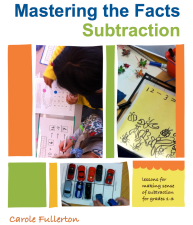Penguins! A game for the whole family
Happy Monday, all!
In a time when we find ourselves spending more time together, learning and thinking and playing together at home, I wanted to share a game that is appropriate for players of all ages. The game “Penguins!” is strategic and fun for the whole family!
To play you’ll need 2 regular 6-sided dice and some counters. They can be beans coloured on one side with a marker, or even some Cheerios and some Shreddies cereal. It’s a good idea to have a piece of paper and a pencil handy for calculations.
Here’s how to play (full instructions are included on the “Penguins!” game board):
 Roll the dice. Look at the numbers.
Roll the dice. Look at the numbers.
Find the sum and write it down. (add the numbers)
Find the difference and write it down. (subtract one number from the other)
Find the product and write it down. (multiply the numbers)
Now decide which one of these answers (the sum, the difference or the product) you will use. You can only pick one! Cover that number in your colour. Let your partner have a turn. If your sum AND your difference AND your product are taken, you can cover a penguin instead! Three in a line in your colour wins the game.
Have fun!
Carole
Simple Dice Games for Math Practice
Hello friends
Today marks the beginning of a new kind of school — the stay-at-home kind. More than ever we are going to need to be flexible and patient and kind to our kids, their parents and our teacher colleagues. We are in uncharted waters… but not without good will!
I wanted to offer up a couple of simple dice games for you to play at home, to build number sense and computational fluency while having fun…
 For more games like these, check out my resources entitled: Mastering the Facts Addition (2nd Edition) , Mastering the Facts Subtraction and Mastering the Facts Multiplication (2nd Edition) available from my online store.
For more games like these, check out my resources entitled: Mastering the Facts Addition (2nd Edition) , Mastering the Facts Subtraction and Mastering the Facts Multiplication (2nd Edition) available from my online store.
Stay safe. Be kind.
Carole
Reach for the Top You can play this game alone, with a partner or against a partner. Print a copy of the Reach for the Top grid available here.
How to play: Roll two 6-sided dice. Find the sum. Write the equation in the box over the sum (or colour it in). The game is over when one of the sums reaches the top! (See the sample game below.)
 Order of Operations Bowling: You can play this game alone, with a partner or against a partner. You need one 6-sided die and the optional Bowling Pin recording sheet attached. The object of the game is to “knock down” all the bowling pins from 1 to 10.
Order of Operations Bowling: You can play this game alone, with a partner or against a partner. You need one 6-sided die and the optional Bowling Pin recording sheet attached. The object of the game is to “knock down” all the bowling pins from 1 to 10.
How to play: Roll the die 3 times. Record the 3 numbers. Use these three numbers — in any order — to create an equation with an answer of 1. You must use all three numbers. Once you’ve found an equation (or 2 or 3!) with an answer of 1, cross off the bowling pin with the number 1 on it. Now move on to the number 2, then 3, then 4… until you have created equations with all the answers from 1 to 10. Each time you find an equation, you can knock down the pin with that number on it.
If you can knock down all 10 bowling pins with one set of numbers, you get a “strike”. If not, roll the dice 3 more times to get a new set of numbers and continue. Two sets of numbers earns you a “spare”. How many different operations can you use?
In the sample round below, Player A rolled a 1, a 5 and a 6. She used all 3 numbers to create equations (a whole bunch of them!) with an answer of 1. She chooses one of the equations and knocks down the 1 pin. She then moves on to create equations with an answer of 2.
Mastering the Multiplication Facts – Strategic thinking…
 Hello to my colleagues in Coquitlam!
Hello to my colleagues in Coquitlam!
I wanted to share a template for a set of multiplication flash cards that are set up to be used by strategy. You’ll notice that in the attached multiplication fact cards file, each of the fact families appears in a different colour, to bring to mind the particular strategy that matches the fact. The hope here is that, like with Cuisenaire rods. the related colours will help to call to mind the relationships between the facts themselves. I recommend that students cut apart the cards and practice the facts by strategy, one at a time, as they learn and then recall them.
Here’s the idea…
Consider the “multiply by 5” facts. For these, we think of the 10’s facts, and then find half of it…
7 x 5… think 7 x 10 ÷ 2 or 70 ÷ 2
Because the 5 facts are related to the 10’s fact, their colours are likewise related in the flash cards – yellow for the 5’s and orange for the 10’s.
The 9’s are another fact related to ten. For the “multiply by 9’s” we think multiply by ten and subtract one group.
7 x 9… think 7 x (10 – 1) or 7 x 10 – 7
The 9 fact cards are in a related colour as well – red for the 9’s and orange for the tens.
In the same vein, the 2’s are green, the fours are dark green (since they are double twos or the “double-doubles”) and the 3’s are blue. All are related colours, and each family uses the 2’s in some way. For three, we think double and add one set, like so:
7 x 3…. think 7 x (2 + 1) or 7 x 2 + 7
As for the remaining colours, the 1’s facts are all in white to highlight their simplicity (What you see is what you get!!), the square numbers are purple (for no other reason than purple is my favourite colour and the squares are my favourite facts!) and the last three remaining facts – the most complex ones to master strategically – are in pink.
The facts that are the reverse of all of these (the commutative or “flip-around” facts) have been left uncoloured in the bottom left hand corner of the virtual chart, since if we master the coloured ones – and practice them both forwards and backwards – we will likewise have mastered these ones. You might choose to print and cut them out, or not.
Hope this proves helpful…
Carole








